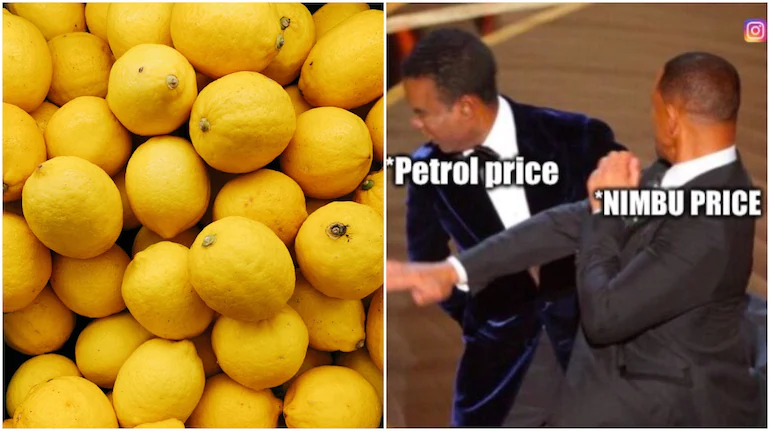Lemon prices have reached historic highs in recent weeks, with a single lemon costing between Rs 10 and Rs 15 in most stores.

The fruit is cultivated in orchards that cover a total of 3.17 million hectares throughout the nation. Three times a year, lemon trees bloom and produce fruit. With 45,000 hectares under lemon cultivation, Andhra Pradesh is the largest lemon-growing state in the country. The other main lemon-growing states are Maharashtra, Gujarat, Odisha, and Tamil Nadu.
In Hindi, nimbu refers to two different types of citrus: lemon and lime. The most widely produced kind in the nation is the tiny, spherical, and thin-skinned kaagzi. Lime, on the other hand, refers to the dark green fruits that are commercially cultivated in North India and the Northeast, including local favourites such as the gondhoraj in West Bengal.
India produces around 37.17 lakh tonnes of the fruit each year, which is consumed in the country. Neither the fruit is exported nor imported.
The fruit grows best in a warm, somewhat dry, and damp climate, with high rains causing bacterial infections in orchards. Grafting is used to grow the plants, with the ICAR Central Citrus Research Institute (CCRI) in Nagpur and numerous state agricultural institutes keeping high-quality root stocks. On average, farmers plant 210-250 lemon trees per acre, with orchards yielding their first crop after three years. A single tree may produce 1,000-1,500 fruits on average.
Farmers feed the fruit all year by encouraging blooming through a process known as the ‘bahar treatment,’ according to Dr. A A Murkute, the CCRI’s main scientist. Farmers delay irrigation and chemical sprays during this treatment, trim the orchards, and then begin fertiliser treatment and irrigation, which leads to blooming and hence fruit development.
Lemon producers harvest three bahars a year: Ambe, Mrig, and Hasta, which are called for the seasons in which bloom is induced. Flowering begins in January-February during the Ambe bahar, with fruit development beginning in April. Orchards blossom in June-July during the Mrig bahar, and the harvest occurs in October. Flowering takes place in September-October, with harvest taking place in March. Because these bahars overlap, farmers have fruit to sell all year.
According to Dr. Murkute, the Ambe bahar harvests over 60% of the produce that feeds the market, while the Mrig bahar provides 30% and the Hasta bahar the remainder. The majority of Mrig bahar fruit is transferred to cold storage, but fresh fruits from the other two bahars are sold in stores.
The failure of the Hasta bahar and the succeeding Ambe bahar is one of the key causes. Last year’s monsoon was quite favourable across the country, but the months of September and October saw particularly significant rains. Because lemon orchards are particularly susceptible to excessive moisture, the bahar treatment failed owing to the significant rainfall, and blooming did not occur. This fruit is often preserved in cold storage and sold until the next Ambe bahar fruit comes. Farmers had smaller harvests to preserve this time due to a much reduced crop.
Farmers reported a decline in flowering during the early stages of the Ambe bahar fruit due to unseasonal rain. Temperatures have been rising since the end of February, forcing the younger fruits to drop off. The stored Hasta bahar and fresh Ambe bahar fruits fuel the market throughout the summer, when demand for lemon peaks. However, the twin whammy has taken a toll on productivity.
Farmers and dealers predicted that this would be one of the few years when two bahars failed in a row. Due to the few arrivals, lemon prices have reached new highs across the country.
Traders have ruled out any imminent improvement in arrivals, thus the chances of a price correction are slim. The next harvest to reach the market isn’t expected until after October, and only then will arrivals increase dramatically. Currently, some Ambe bahar arrivals are expected from locations where blossoming has not been severely hampered. Even still, it is not envisaged that this arrival will be sufficient to fulfil demand.

